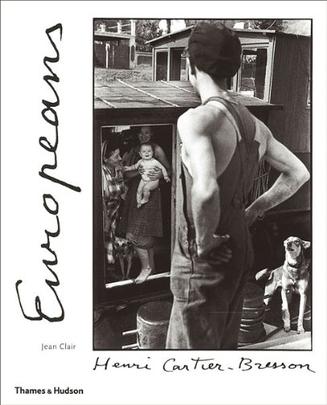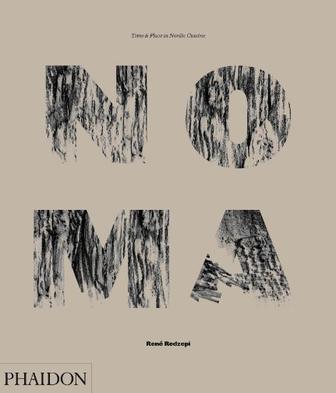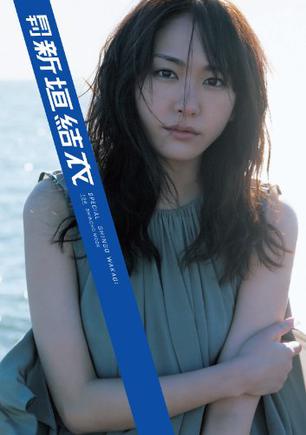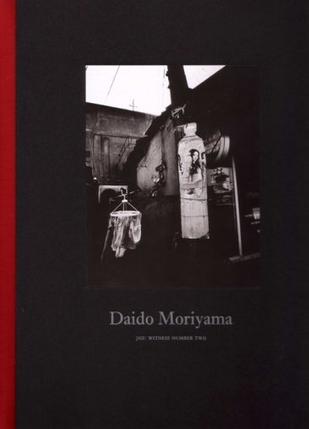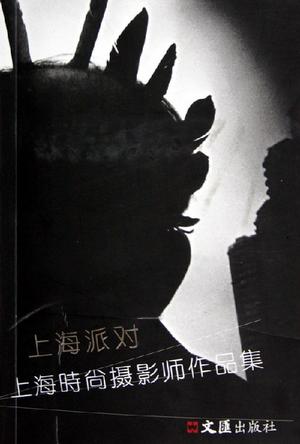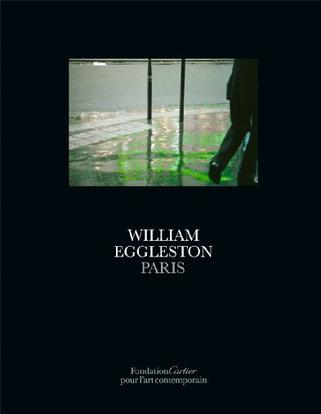欢迎来到相识电子书!
标签:摄影
-
单反数码相机圣经
生活由一个个剪影构成,剪影里充满喜怒哀乐,于是有人发明了照相机用来记录下生活的点滴;一张张包含了不同人生的画面被保存了下来,摄影由此诞生。照相机发展到今天已经到了数字化阶段,虽然摄影器材在不停的变化,但摄影的本质并没有变,反而是数字化的相机让我们在摄影时有了更多的乐趣,操作也更加的轻松。 随着单反数码相机(DSLR)的降价,普及运动也在如火如荼的展开,更多的家庭用户和摄影爱好者拥了它。因此一本全面介绍单反数码相机的图书就成了摄友们急切的需要。当然为初级用户解难达疑也是摄影老手们十分愿意做的事情,这里我们找到了几位酷爱摄影的老摄友来撰写本书,其中有一位更是因为职业之便玩遍了几乎所有单反数码相机,在使用摄影器材的经验上相当丰富。正是他们的帮助让本书能够成为广大摄友们的案头读物,同时,本书文图结合,浅显易懂,让最初级的菜鸟也能轻松掌握里面的知识,晋升摄影高人。 本书从购买DSLR及组成一个完整的摄影系统讲起,到如何提高自己的摄影技巧、如何保养自己的爱机,共分七章,一个附录,包含了DSLR的各个方面的知识,让读者能够通透地对单反数码相机摄影进行了解。 -
我的相片绘画手札
《我的相片绘画手札》是一个没学过画画的女生+一个爱拍相片的女生,告诉你如何用相片写博客·交换心情。只要有心,愿意尝试,一点小特效,再加上个人独一无二的手绘,就能让相片变为精彩有趣的数码绘画作品,用最特别的方式,记录你我生活中最美好的点点滴滴! -
Lightroom行摄修片宝典
《Lightroom行摄修片宝典》以实例为载体,讲解Lightroom软件的核心功能,以及各种类型RAW照片的后期处理思路与方法,并且加入相关的行摄提示,是一本集旅行体验、拍摄提示和后期修图处理知识为一体的教程。 全书分为“基础篇”、“风光篇”、“人物篇”和“黑白篇”四大部分,数码后期资深专家刘中老师与知名旅行作家康丹(网名:43辞职去旅行)联手写作,让读者在品读美文的同时,学到专业的实用技术。 《Lightroom行摄修片宝典》适用于摄影师和广大影友,也可用于高校课堂教学。 -
数码摄影构图与用光加强版
《数码摄影构图与用光图解加强版》自2009年5月出版以来,以其详实的内容、实用的摄影技巧与新颖的讲解方式,深受摄影爱好者的欢迎,经连续多次重印,高居同类图书销售排行榜前列。《数码摄影构图与用光图解加强版》在优化上一版内容结构的基础上,进一步充实了核心摄影知识与技巧;在讲解方式上,进一步加强了“图解”的直观性,绝大部分实例都用详细的图解方式和条块细分的摄影技巧进行解说,让你可以用最短的时间,以最直接的方式掌握摄影技术的精髓。 总而言之,这是一本适合初学与进阶者,能让你在构图和用光技术上快速提高的摄影专题指南。只要你热爱摄影,并随本手册的引导勤练手,你就一定可以拍出大师级的作品来。 -
南方生活
《人民画报·中国生活:南方生活(1950-2010)》内容简介:这是继《革命年代》、《劳动人民》、《北京生活》和《上海生活》之后,“人民画报·中国生活”系列推出的第二批摄影画册。它依照中国东、南、西、北四个自然区域,将照片分别汇编入《东部生活》、《南方生活》、《西部生活》和《北方生活》四个分册中。收入的照片大多精选自《人民画报》,时间均为1950年到2010年,每册400多幅纪实性图片记录了典型事件、典型人物、典型情绪和典型的瞬间。所辑选的图片涵盖了生产、买卖、居住、交际、出行、饮食、衣饰、婚娶、生育、医疗、文娱、体育等日常生活内容,共同呈现了一个原生态的中国,和读者一起重构共和国60年的历史体验和印象。 -
Henri Cartier-Bresson
In 1955, Henri Cartier-Bresson published "The Europeans", a portrait of the continent documenting a landscape shadowed by the war. In this book, the photographer brings together images spanning the years from the late 1920s to the early 1970s. He has travelled across Europe, from the Scandinavian shield to the Irish bogs, in order to capture what it means to be European. Beyond nationalism and the particular characteristics of each culture and nation, he has found evidence of a greater identity, a likeness shared by the people and the landscape. His photographs seek to speak of the same daily ceremony, of the ongoing business of living for people across Europe, whether Polish priests in alb or cassock, or Abruzzi peasants shrouded in the black of their cloaks and hats. -
Robert Capa
"Robert Capa: Photographs" is the first true retrospective book of one of the century's greatest photographers. Drawing upon hundreds of previously unseen images, this collection reveals Capa as one of the great poets of the camera. In these photographs, we see through the eyes of a driven humanist who was also a documentarian of the highest caliber. While previous volumes on Capa have focused on his role as a war photographer, "Robert Capa: Photographs" shows us the remarkable range of his work, which encompasses the sufferings as well as the tenderness, humor and wonder of his subjects. Robert Capa demonstrated not only a passionate commitment to improving the human condition, but also an unfailing eye for graphic impact. Although his photographs remain the definitive visual records of such momentous events as the siege of Madrid, the bombing of Hankou, and the Allied landings on D-day, many of his images have a timeless and universal quality that transcends the specifics of history. A Spanish soldier recoils at the impact of a bullet, the final instant of his life. In a scene of perfect joy, a group of Chinese children laugh at the sky as snow begins to fall. Four farm workers, hauling all the belongings they can manage, trudge grimly away from an apocalyptic backdrop of smoke and ruins: their war-devastated homes. Capa's images reveal his profound compassion and perceptiveness about our tenuous human state. As Cornell Capa (Robert's younger brother and the Founding Director Emeritus of the International Center of Photography) writes in his eloquent remembrance: "He managed to travel all over the world, and to communicate his experience and feelings through a universallanguage: photography." "Robert Capa: Photographs" also includes a foreword by Capa's close friend Henri Cartier-Bresson, as well as an informative historical essay by Capa biographer Richard Whelan. At last, here is the book that reveals Robert Capa in a new light. The extraordinary collection of images in "Robert Capa: Photographs" brings us--through the events of history--to the very heart of humanity. -
Noma
Those unable to secure a seat at the World's Best Restaurant 2010, the 12-table Noma near Copenhagen, will have to settle for this massive study of the restaurant and its chef, 32-year-old Rene Redzepi. Even a casual flip will reveal why Redzepi's imaginative combinations and fiercely local approach to sourcing vaulted him over stalwarts like El Bulli: sous vide reindeer shoulder served with celery root rolled in hay ashes and a wild herb gel, a whimsical meringue-based snowman atop buckthorn mousse and carrot sorbet, and a carrot cake-coated ligonberry sorbet served with hay cream are but a few of his spectacularly innovative dishes. While few home cooks will have the equipment, ingredients, or patience to attempt Musk Ox and Fresh Young Garlic or Milk Skin and Caramelized Garlic, fans of molecular gastronomy will have a field day with this ode to meticulous construction and presentation. In the end, whether Redzepi's almost ridiculously complicated dishes reveal a pretentious chef or a passionate one making the most of his ingredients doesn't matter. This is an envelope-pushing exercise that deserves respect. 200 color photos. (c) Copyright PWxyz, LLC. All rights reserved. -
世界人像摄影十杰
回望大师(世界艺术摄影十杰),ISBN:9787500834717,作者:夏雨编著 -
新潮ムック 月刊 新垣結衣 Special (SHINCHO MOOK 134)
7月22日、ガッキーが『月刊シリーズ』に登場! 大人になったガッキーの色香に迫る! 複雑な魅力を醸し出す新垣結衣にしびれます! 3年ぶりの写真集となる今回の撮影は、まもなく22歳になるという今年4月、ガッキー主演映画「ハナミズキ?君と好きな人が百年続きますように(8/21?全国公開)」のロケ地ニューヨークに前のりして行われました。 ヨンカースのグレイストーン?コート邸やマンハッタンのチェルシー地区、ブルックリンの古くからの行楽地コニーアイランドなどでの撮影は、大人になった新垣結衣の魅力に迫るとともに、いまのガッキーの等身大の姿を多面的にとらえたいという狙いで行われました。 撮影者は、カルチャーシーンにおいて、いま最も人気のある気鋭の写真家?若木信吾。若木自身が数年間を暮らしたニューヨークで、2日間にわたる濃密なセッションが行われ、新垣結衣の、匂い立つような魅力溢れる新鮮な写真が撮れました。 創刊から12年目、数々の話題を提供してきた新潮ムック『月刊シリーズ』にとっても、最も人気のある旬な正統派若手女優とのセッションは、新たな試みでもありました。そしてグラビアというイメージを超えて、女優写真の表現性をより広げられたと自負できるものになりました。 どうぞ7月22日の発売をご期待ください。 -
RINKA NOT NOW!!
内容紹介 4人の人気スタイリストが、それぞれ梨花をプロデュース。モードがあり、緊縛あり、オールヌードあり・・・・いままで露出したことがない彼女が次々と現れます。 ヴィジュアルもメッセージも梨花が、ひとつの区切りとして創りたかったという思い入れの強い内容になっています。 まさに存在自体が事件ともいえる写真集は、“誰も想像できない”梨花がいっぱいです! -
数码单反摄影天书
《DSLR PHOTOGRAPHY数码单反摄影天书》特点:有数码单反入门到全面的摄影技术,由浅到深;掌握数码单反的设定,活学活用拍出精彩作品;大量精彩插图及扼要的文字说明;有系统的编排简洁清晰易明;改编自大学摄影课程的专业教材;全面介绍各种镜头的特性及应用;细致讲授各种书面处理及构图的摄影学问。 工欲善其事,必先利其器,要认真地学习摄影,除了拥有合适的数码单反及镜头外,一册深入浅出、编排清晰易明的摄影参考教材是必要的。《DSLR PHOTOGRAPHY数码单反摄影天书》取材自大学摄影课程的教材,以扼要的编排、明白的文字,以学习使用数码单镜头反光相机为主线,深入浅出地讲解各种入门者必须掌握的摄影知识,务求读者能够在最短的时间内,全面掌握基本的摄影知识及技巧。 -
数码人像摄影教程
《数码人像摄影教程》主要介绍了与数码人像摄影相关的知识和技巧。《数码人像摄影教程》共分10章,第1章主要介绍数码人像摄影的主要风格,第2章至第6章介绍了人像摄影的构图、用光、色彩、影调、美姿造型等知识,第7章介绍了数码人像摄影中的服装搭配技巧,第8章和第9章介绍了室内人像和外景人像的拍摄方法,第10章介绍了数码人像摄影的数码后期技术。 -
William Eggleston
Occasionally, when he was much younger, the celebrated American photographer William Eggleston used to turn off the lights at his home in Memphis, Tennessee and shoot guns in the dark for fun. "The house was riddled with holes made by $6,000 antique shotguns," an acquaintance once revealed. He is often described by journalists as a heavy-drinking hellraiser, with a weakness for Savile Row suits and expensive cars – over the years, he has owned a Ferrari, a Jaguar, a Bentley and a Rolls-Royce. True to form, after a long lunch with the German fashion photographer Juergen Teller, Eggleston turns up late for our interview in the Fondation Cartier, a museum in Paris devoted to contemporary art, where a new series of his photographs has just opened. A few months short of his 70th birthday, he is dressed immaculately in a navy suit, his brown brogues buffed to a shine – yet there is a whiff of something decidedly louche about him. He slumps in a leather sofa that has been placed in the foyer to his exhibition, not far from a baby grand (Eggleston is an accomplished pianist, and a devotee of Bach). A solitary pearl of perspiration rolls down his forehead.He is here to talk about his new work, his third commission from the Fondation Cartier, which most recently invited him to document Paris in a series of photographs. In the early Sixties, Eggleston took his young wife to the French capital hoping to come away with a suite of meaningful pictures, but he felt blocked, and left with nothing. Over the past three years, however, he has returned to the city several times, and stalked its streets, snapping away on his Leica. During this period, he amassed thousands of pictures, from which the foundation's director, Hervé Chandès, selected 70 for the show. As Eggleston tells me, with some effort, as though dredging up the words from the depths of his soul, "I'm not particular. I don't have favourite pictures." He pauses, before continuing: "To me, the whole project, no matter what size, is the work." Born into a wealthy Southern family (he has never needed to earn money), and raised on a former cotton plantation, Eggleston is credited as a pioneer of colour photography. His breakthrough exhibition at the Museum of Modern Art in New York in 1976 showed that colour photography could be an artistic, and not merely a commercial, medium. At first, the critics condemned his seemingly casual snapshots of everyday life in the Deep South as "perfectly banal". But the book that accompanied the exhibition, William Eggleston's Guide, proved extremely influential. His free-and-easy images, shot quickly without a tripod from quirky angles, glow with gorgeous colour. They were soon seen as refreshingly democratic in both form and content, a tonic to the stagy, studio-manipulated fine-art photography, which, before 1976, had generally been black and white. "I had this notion of what I called a democratic way of looking around," Eggleston once said, "that nothing was more important or less important." The new Parisian pictures continue in this vein. With typical perversity, Eggleston refuses to frame a picture that might result in a visual cliché. There are no shots of famous monuments, no pictures of wrought-iron signs for the Métro. Photographs of chic Parisians strolling through the Jardin du Luxembourg are nowhere to be seen. Instead, there are images of packing crates and graffiti, of a woman begging outside the entrance to the Bastille Métro station, of neon-green light reflected in a puddle of rainwater on a dingy street corner, and of cheap shops selling gaudy tat. Eggleston is drawn to the city's neglected nooks, and often shoots close-up so that it is not immediately clear what the subject of a particular picture is. In fact, many of his photographs could have been taken in any city in the world. Somehow I doubt that they will be used by the Parisian Office du Tourisme any time soon. Was he consciously trying to avoid clichés? "Not really," he says in his slow, gravelly baritone. But surely he was aware of the masters of photography who documented Paris during the 20th century – people like Eugène Atget and Henri Cartier-Bresson? "I knew about them," he says. "That was in the back of my mind." Yet, as he explains in the exhibition guide, he approached Paris as if it was just anywhere: "That resulted in pictures infused with a little mystery. You're not quite sure: is this Paris, Mexico City, elsewhere? I didn't change my style for Paris. I just did as always, used the same approach." Eggleston's photographs of Paris will not be to everyone's taste. At first glance, they seem nondescript. But I love the fact that they are worlds apart from the familiar iconography of this famous city. Eggleston's aesthetic is wonky, half-cocked, provisional – and energetic. His pictures feel fresh and true: tiny scraps of reality ripped from the everyday fabric of life in a modern metropolis. He is capable of transforming the trivial into the transcendental, of wresting beauty from unexpected and overlooked places. His new photographs are also eminently formal, almost abstract. In many of them, bold splashes of colour divide the image into sections, like a vibrant geometric painting by one of the Suprematists. Eggleston only ever takes a picture of something once, which means that his grasp of composition is all the more phenomenal because he never poses his images. His sense of colour would turn most artists, well, green with envy. "Everything must work in concert," he says. "Composition is important but so are many other things, from content to the way colours work with or against each other." Alongside his series of Parisian photographs, Eggleston is also showing 40 abstract paintings and drawings for the first time – colourful squiggles that were mostly created using felt-tip pens. He has drawn like this since he was a child (he didn't become interested in photography until he was at the University of Mississippi, where he became captivated by the work of Cartier-Bresson), and these pictures owe a clear debt to Kandinsky, one of Eggleston's favourite artists. They also feel exceptionally musical, brimming with rhythmic swirls. "I like that idea," he tells me, "though I don't think about that consciously. I like to think that my works flow like music. That may be one reason I work in large groups versus one picture of one thing, it's the flow of the whole series that counts. I think when Paris is finished, it will flow." As things stand, the project is far from finished. "Even though I now have several thousand pictures [of Paris], I still feel I have just barely begun," he says. "It's a big project. I hope it will be my crowning achievement." But, when pressed on what else he plans to document, he clams up. "I don't have anything in mind," he says. "Nothing more I can say would make any sense yet, because the series is not finished. I'm interested in wherever I go." He pauses. "There's no shortage of visually interesting places to me." It's clear that Eggleston hates talking about his work. Throughout the interview, he is courteous but also reticent, like a well-dressed screen idol who never uses three words when one will do. He is also keen to avoid discussing the meaning of his work, and refuses to talk about individual images. His silence piques my curiosity. Why does he hate to talk about his photographs? "I don't know how to," he says, as if it's the most obvious thing in the world. "I'm not busy talking, and I don't write – because I'm busy making images." -
摄影家是怎样炼成的
《助您成长为摄影家的50项修炼:摄影家是怎样炼成的》是著名摄影家刘宽新先生继《数码影像专业教程》、《数码影像专业锐化》和《数码影像核心理念与关键技术》之后的第4本著作。《助您成长为摄影家的50项修炼:摄影家是怎样炼成的》结合作者四十多年的教学与讲座经验以及多年的数码影像鉴定经验,并从多年担任各类影赛(第23届全国摄影艺术展评委)的所见所闻出发,重点讲述阻碍摄影爱好者和摄影家成长的50个核心话题,轻松帮助您跨越摄影成长之路上的50级台阶。
热门标签
下载排行榜
- 1 梦的解析:最佳译本
- 2 李鸿章全传
- 3 淡定的智慧
- 4 心理操控术
- 5 哈佛口才课
- 6 俗世奇人
- 7 日瓦戈医生
- 8 笑死你的逻辑学
- 9 历史老师没教过的历史
- 10 1分钟和陌生人成为朋友








